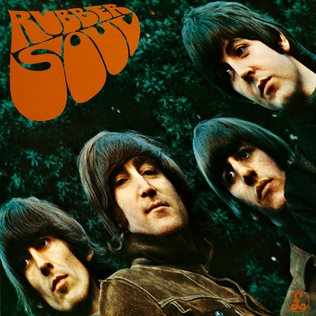
Rubber Soul is the sixth studio album by the English rock band the Beatles. It was released on 3 December 1965 in the United Kingdom on EMI's Parlophone label, accompanied by the non-album double A-side single "Day Tripper" / "We Can Work It Out". The original North American release, issued by Capitol Records, contains ten of the fourteen songs and two tracks withheld from the band's Help! (1965) album. Rubber Soul was described as an important artistic achievement by the band, meeting a highly favourable critical response and topping sales charts in Britain and the United States for several weeks.
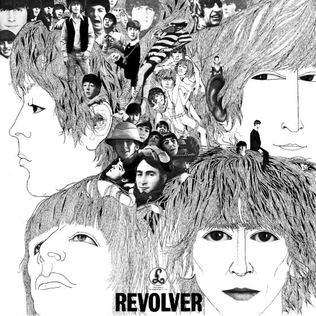
Revolver is the seventh studio album by the English rock band the Beatles. It was released on 5 August 1966, accompanied by the double A-side single "Eleanor Rigby" / "Yellow Submarine". The album was the Beatles' final recording project before their retirement as live performers and marked the group's most overt use of studio technology to date, building on the advances of their late 1965 release Rubber Soul. It has since become regarded as one of the greatest and most innovative albums in the history of popular music, with recognition centred on its range of musical styles, diverse sounds and lyrical content.

The English rock band the Beatles, comprising John Lennon, Paul McCartney, George Harrison and Ringo Starr, are commonly regarded as the foremost and most influential band in popular music history. They sparked the "Beatlemania" phenomenon in 1963, gained international superstardom in 1964, and remained active until their break-up in 1970. Over the latter half of the decade, they were often viewed as orchestrators of society's developments. Their recognition concerns their effect on the era's youth and counterculture, British identity, popular music's evolution into an art form, and their unprecedented following.

The Swinging Sixties was a youth-driven cultural revolution that took place in the United Kingdom during the mid-to-late 1960s, emphasising modernity and fun-loving hedonism, with Swinging London denoted as its centre. It saw a flourishing in art, music and fashion, and was symbolised by the city's "pop and fashion exports", such as the Beatles, as the multimedia leaders of the British Invasion of musical acts; the mod and psychedelic subcultures; Mary Quant's miniskirt designs; popular fashion models such as Twiggy and Jean Shrimpton; the iconic status of popular shopping areas such as London's King's Road, Kensington and Carnaby Street; the political activism of the anti-nuclear movement; and the sexual liberation movement.

Patricia Anne Boyd is an English model and photographer. She was one of the leading international models during the 1960s and, with Jean Shrimpton, epitomised the British female look of the era. Boyd married George Harrison in 1966, experiencing the height of the Beatles' popularity and sharing in their embrace of Indian spirituality. She divorced Harrison in 1977 and married mutual friend Eric Clapton in 1979; they divorced in 1989. Boyd inspired Harrison's songs "I Need You", "If I Needed Someone", "Something" and "For You Blue", and Clapton's songs "Layla", "Bell Bottom Blues" and "Wonderful Tonight".
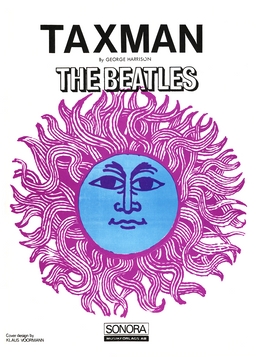
"Taxman" is a song by the English rock band the Beatles from their 1966 album Revolver. Written by the group's lead guitarist, George Harrison, with some lyrical assistance from John Lennon, it protests against the higher level of progressive tax imposed in the United Kingdom by the Labour government of Harold Wilson, which saw the Beatles paying a 95% supertax. The song was selected as the album's opening track and contributed to Harrison's emergence as a songwriter beside the dominant Lennon–McCartney partnership. It was the group's first topical song and the first political statement they had made in their music.

A Collection of Beatles Oldies is a compilation album by the English rock band the Beatles. Released in the United Kingdom in December 1966, it features hit singles and other songs issued by the group between 1963 and 1966. The compilation served as a stopgap release to satisfy EMI's demand for product during the Christmas period, since the Beatles had only begun recording Sgt. Pepper's Lonely Hearts Club Band, the follow-up to their Revolver album, late the previous month. It was the band's first official greatest hits collection, although the Beatles had no involvement in the album.
The Speakeasy Club, also known as The Speak, was a club situated at 48 Margaret Street, London, England, and served as a late-night meeting place for the music industry from 1966 to June 1978. The club took its name and theme from the speakeasies of the American Prohibition era. The club was owned by Iraqi-born entrepreneur David Shamoon, along with Blaises and The Revolution Club.

"Paperback Writer" is a song by the English rock band the Beatles. Written primarily by Paul McCartney and credited to the Lennon–McCartney partnership, the song was released as the A-side of their eleventh single in May 1966. It topped singles charts in the United Kingdom, the United States, Ireland, West Germany, Australia, New Zealand and Norway. On the US Billboard Hot 100, the song was at number one for two non-consecutive weeks, being interrupted by Frank Sinatra's "Strangers in the Night".

"Rain" is a song by the English rock band the Beatles, released on 30 May 1966 as the B-side of their "Paperback Writer" single. Both songs were recorded during the sessions for Revolver, although neither appear on that album. "Rain" was written by John Lennon and credited to the Lennon–McCartney partnership. He described it as being "about people moaning about the weather all the time".

"You Won't See Me" is a song by the English rock band the Beatles from their 1965 album Rubber Soul. It was written by Paul McCartney and credited to Lennon–McCartney. As with songs such as "We Can Work It Out" and "I'm Looking Through You" from the same period, the lyrics address McCartney's troubled relationship with Jane Asher and her desire to pursue her career as a stage and film actress. The Beatles recorded the song during what author Mark Lewisohn describes as a "marathon" final recording session for Rubber Soul, to ensure the album's pre-Christmas release.

"Think for Yourself" is a song by the English rock band the Beatles from their 1965 album Rubber Soul. It was written by George Harrison, the band's lead guitarist, and, together with "If I Needed Someone", marked the start of his emergence as a songwriter beside John Lennon and Paul McCartney. The song's lyrics advocate independent thinking and reflect the Beatles' move towards more sophisticated concepts in their writing at this stage of their career. The song has invited interpretation as both a political statement and a love song, as Harrison dismisses a lover or friend in a tone that some commentators liken to Bob Dylan's 1965 single "Positively 4th Street". Among musicologists, the composition has been recognised as adventurous in the degree of tonal ambiguity it employs across parallel major and minor keys and through its suggestion of multiple musical modes.
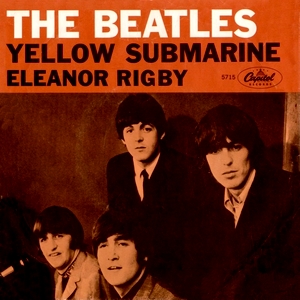
"Eleanor Rigby" is a song by the English rock band the Beatles from their 1966 album Revolver. It was also issued on a double A-side single, paired with "Yellow Submarine". Credited to the Lennon–McCartney songwriting partnership, the song is one of only a few in which John Lennon and Paul McCartney later disputed primary authorship. Eyewitness testimony from several independent sources, including George Martin and Pete Shotton, supports McCartney's claim to authorship.
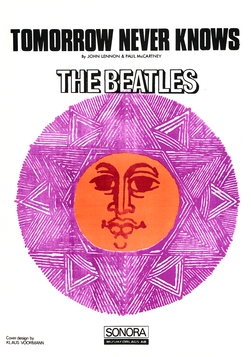
"Tomorrow Never Knows" is a song by the English rock band the Beatles, written primarily by John Lennon and credited to Lennon–McCartney. It was released in August 1966 as the final track on their album Revolver, although it was the first song recorded for the LP. The song marked a radical departure for the Beatles, as the band fully embraced the potential of the recording studio without consideration for reproducing the results in concert.

"Blue Jay Way" is a song by the English rock band the Beatles. Written by George Harrison, it was released in 1967 on the group's Magical Mystery Tour EP and album. The song was named after a street in the Hollywood Hills of Los Angeles where Harrison stayed in August 1967, shortly before visiting the Haight-Ashbury district of San Francisco. The lyrics document Harrison's wait for music publicist Derek Taylor to find his way to Blue Jay Way through the fog-ridden hills, while Harrison struggled to stay awake after the flight from London to Los Angeles.
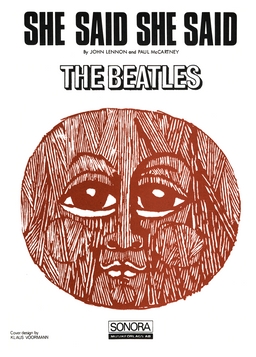
"She Said She Said" is a song by the English rock band the Beatles from their 1966 album Revolver. Credited to Lennon–McCartney, it was written by John Lennon with assistance from George Harrison. Lennon described it as "an 'acidy' song" with lyrics inspired by actor Peter Fonda's comments during an LSD trip in August 1965 with members of the Beatles and the Byrds. "She Said She Said" was the last track recorded for Revolver. Due to an argument over the song's musical arrangement, Paul McCartney walked out of the studio during the song's recording.
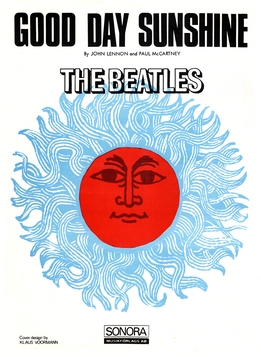
"Good Day Sunshine" is a song by the English rock band the Beatles from their 1966 album Revolver. It was written mainly by Paul McCartney and credited to the Lennon–McCartney partnership. McCartney intended it as a song in the style of the Lovin' Spoonful's contemporaneous hit single "Daydream". The recording includes multiple pianos played in the barrelhouse style and evokes a vaudevillian mood.
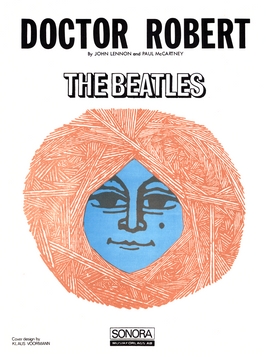
"Doctor Robert" is a song by the English rock band the Beatles. It was released in 1966 on their album Revolver, apart from in North America, where it instead appeared on their Yesterday and Today album. The song was written by John Lennon, although Paul McCartney has said that he co-wrote it. The Beatles recorded the track in seven takes on 17 April 1966, with vocals overdubbed on 19 April.

The Family Way is a soundtrack album composed by Paul McCartney, produced and arranged by George Martin, and credited to "the George Martin Orchestra". Released on Decca Records in January 1967 under the full title The Family Way , it is the soundtrack to the 1966 film The Family Way, directed by Roy Boulting and starring Hayley Mills. It consists of Martin's arrangements of music composed by Paul McCartney of the Beatles especially for the project. The record was preceded by a non-album single, again credited to the George Martin Orchestra, issued on 23 December 1966 by United Artists Records and comprising "Love in the Open Air" backed with "Theme from 'The Family Way'".
The Ad Lib Club was a nightclub on the fourth floor of 7 Leicester Place over the Prince Charles Cinema in London's Soho district. It opened in February 1964, and closed in its original location after a fire in November 1966. The owner, Brian Morris, unsuccessfully tried to reopen the club in Covent Garden. The club was noted for its R&B and Soul music.



















